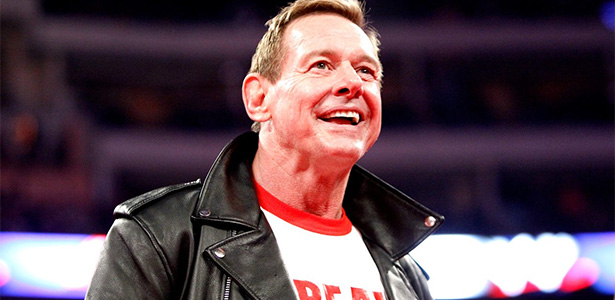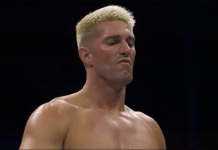
Since the world is still paused from the ongoing pandemic, and most of us are going crazier than the ECW roster at an after party in 1998 because of the various stay-at-home orders in different states, I’ve decided to try something different for a series of articles to highlight Wrestlemania, the most recent addition we saw last week in front of no audience. It’s my hope to cover an edition of the annual event each day and through retrospect, add something new to the historical contents of those shows. I started watching the Wrestlemania events in chronological order at the beginning of the shut down with the thought that there wouldn’t necessarily be much material to work with as far as current content since so much is taped within limited parameters because it’s still unknown when the shut down will conclude. That being said, there should be enough time to cover the entire run of WM from the iconic to the ridiculous moments over the past three and a half decades.
So, obviously starting with debut event made sense and from a reflection stand point, I think the atmosphere of this show underscores one of the things I’ve written about a lot recently with the current landscape of wrestling, the business draws the best when it reflects the climate of society. With as great as the WWE documentaries and video packages are, it’s often forgotten just how much of a role the launch of MTV and its association with wrestling, including the “War to Settle the Score” special, propelled the concept of sports entertainment into the pop culture landscape of the 80s. It was no coincidence that the A-Team was huge and Mr. T was in the main event, the same way Mike Tyson made headlines in the late-90s before he played a pivotal role in the championship victory of Stone Cold Steve Austin at Wrestlemania in 1998.
Another interesting note to take a look at when you view this card is how the WWF and particularly how it tailored its product to the north east audience, is that the concept of preliminarily matches very much play a role just to complete the card while the main selling point was only the top matches. For example, the opening of the masked executioner, who was portrayed by the extremely underrated Buddy Rose, against Tito Santana was a decent way to start the show because Rose took great bumps for Tito, but there wasn’t any type of storyline around it. The squash match of King Kong Bundy vs. SD Jones was really only used to give Bundy a boost, which later made sense as he would go on to main event the following year against Hogan. Similar to the Tito bout, Ricky Steamboat vs. Matt Borne was a decent match, but there wasn’t an angle behind it. The theme for the first half of the card is that those matches were more or less interchangeable with any of random pairings that the company would’ve booked because despite some solid names, none of those contests were positioned in a way that made a measurable difference in the selling point of the event.
As a comparison, the NWA’s showcase event that year, Starrcade featured much more depth to the card because it brought feuds from various territories and also had a fan base that demanded more wrestling substances than just the sizzle of a promotional push. That’s not a jab at the McMahon sports entertainment empire either, but rather to point out the differences in the style that ultimately made a major difference in the years that followed. The argument could definitely be made that the NWA product under the Jim Crockett banner at the time had a superior in-ring product, but the WWF had the draw to the causal fan, which translated into more revenue. Granted, the fact that JCP had to sell to Ted Turner a few years later is proof of this, but even from purely a business stand point, the WWF was more successful even before the NWA collapse because Wrestlemania established the company as a main stream brand in the 80s.
The Junkyard Dog won a match against Greg Valentine via DQ, allowing “The Hammer” to retain his title. While JYD would look like a shell of himself five years later in WCW, this Junkyard Dog shows why he was such a draw in his prime. JYD didn’t call too many different plays in the ring, but what he called worked very well. The simple move set didn’t matter, which should be something that modern fans should take note of. He was so charismatic and the crowd was behind him for everything in this bout.
As the event progressed, David Sammartino challenged Brutus Beefcake in a bout that went to a double DQ when Bruno made the save and sent Brutus’ manager, Johnny Valiant flying from the ring via a right hook to halt his interference. The reason I want to discuss this segment is that it personifies why Vince wanted to use David to get Bruno back into the ring. Bruno was still a main event draw just four years earlier before he retired, and the reaction that he received for his involvement was proof that the MSG crowd still considered him an icon. In some ways, I think Bruno’s last run as a wrestler, including a notable feud with Roddy Piper, was a way to bridge the fans of his era and the newer product, especially because Madison Square Garden was still a central location for WWF cards. On the flip side, this segment also showed way David, regardless of the resemblance to his dad, was never going to be another Bruno. David was in a tough spot to begin with to attempt to live up to the Sammartino name in the squared circle, and he just didn’t have the charisma or intensity of the former record-setting WWWF champion.
As much as David’s match was evidence that time had marched forward, the WWF tag team title match of Nikolai Volkoff & The Iron Sheik vs. The US Express was an example of the evolving narrative in society. I actually wrote about this in-depth for a college research paper when I earned a Communications degree, how the narratives in professional wrestling are the most successful when they reflect the themes of society. Yes, I’m still shocked I was allowed to write a 20-pages paper about sports entertainment for credit towards a degree. However, one of the main points that I made throughout the thesis is that as society became more informed, the narratives used to draw money weren’t as simplistic as they were in the past, which brought more modern storytelling to the product throughout the years. The major example was that in the post-World War II era, simply announcing a competitor from a foreign country made them a villain and that alone usually had enough heat to draw money at the top of the card. Bruno battled foreign heels throughout his reign as champion because it was a topical subject at the time. By 1985, the world progressed and whilee there was still a place for the Russians or the Germans on the card, it didn’t automatically cast them as a heel and more importantly, the world was evolved enough to know that not all foreigners are villains so that role slid down to the mid-card, which is where it was booked for Wrestlemania.
The Iron Sheik and Nikolai won, which was great, mostly because I think Iron Sheik is tremendous. It should also be noted that both Windham and Rotundo exit the promotion soon after this, but each returned later. Barry Windham is a unique case because it always seems like he should’ve been a bigger star with the stellar skills he had in the ring, but for different reasons, including when he jumped to the WWF for this US Express run, he just didn’t reach the level that he could’ve. Another common suggestion in shoot interviews is that Windham was rather easy-going and making it to the top of the card with the responsibility as champion wasn’t a priority for him. Either way, he’s undoubtedly an underrated performer, specifically his work within a three or four year span from the late-80s.
Next up were the top matches on the show and this is where the difference is with what really sold this show to a sellout MSG crowd and the closed-circuit audience. The culmination of the Andre The Giant/Big John Studd feud was center stage for a body slam challenge. Studd was a great heel and did very well establishing himself and proclaiming he was the true giant, something that set up well for the payoff in this segment. Andre had such a presence that he more or less defined legendary status in sports entertainment, but he was already less mobile than he was just a few years earlier. The bell-to-bell action wasn’t anything spectacular, but the fans got the moment of Andre throwing Bobby Hennan’s money into the crowd so it accomplished the goal.
Wendi Richter vs. Leilani Kai was the very basic women’s match of the time with the Moolah playbook used throughout it. But again, this is another example of wrestling being more about memorable moments than matches. As I mentioned earlier, the MTV association was critical to the surge in popularity for the WWF, and the visual of Cyndi Lauper celebrating with Wendi Richter is what this match had to accomplish because it brought more publicly to the WWF after the event.
When it comes to moments being the key in sports entertainment, the main event tag match has a lot of them. With an all-star panel of celebrities involved with Liberace, Billy Martin, and Muhammad Ali, the company made sure to make the biggest match on the card as big of a spectacle as possible. Roddy Piper’s entrance here is awesome and he exudes a villainous persona just from the way he walks to the ring. Up until more recent years, the WWF always banked on sending the fans home happy, which is how this bout finished with Hulk and Mr. T victorious in a match that was almost entirely sizzle instead of actual wrestling, which suited the scenario fine.
Even as popular as Hulk was at the time, I honestly think the draw of this event was based on the heat Piper had as a heel. If Hulk was booked against a less than formidable challenger, the fans would’ve been it as an easy conclusion that Hogan could get the win. But, fans wanted to see Piper finally get payback in some form because of all the dastardly tactics he used on television. As different as the WWF and NWA were at the time, there was a reason Ric Flair had such a lengthy run as champion because similar to Wrestlemania in 1985, the heat is where the money is in sports entertainment.
What do you think? Comment below with your thoughts, opinions, feedback and anything else that was raised.
Until next week
-Jim LaMotta
E mail [email protected] | You can follow me on Twitter @jimlamotta







